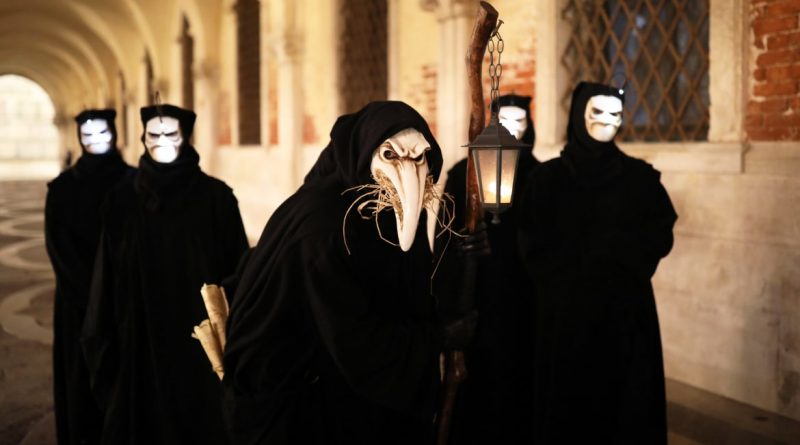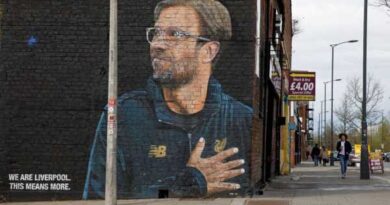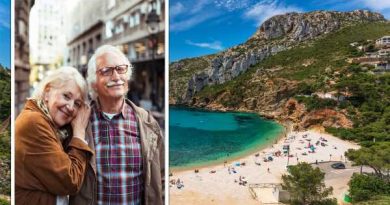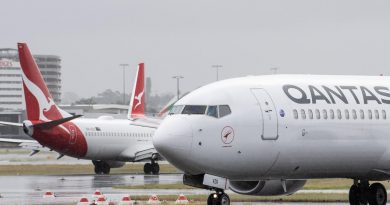Venice Carnival in the Time of COVID is Unlike Any Before It, But No One Wants to Repeat It
VENICE—In a normal year during Carnival, St. Mark’s Square is invariably a sea of papier-mâché and feathers, heaving with Venetians and tourists dressed in ornate period costumes topped with hand-painted bejeweled masks. Around 3 million tourists from all over the world descend on Venice for the two-week lead-up to Fat Tuesday each year. It is a heady mix of revelry and tradition that culminates in fancy dress parties in spectacular palaces lining the Grand Canal that last until dawn to herald in the staid Lenten season that kicks off on Ash Wednesday.
The Venetian Carnival in the time of COVID is decidedly different, not least because all public celebrations have been cancelled and are instead being streamed online. Restaurants are closed at 6 p.m. and the city must button up at 10 p.m. by law due to a nationwide curfew thanks to the second wave of the coronavirus pandemic. Normally, Carnival is a time when many Venetians head out of town due to the influx of tourists, but with travel between Italian regions prohibited and tourism from abroad at a standstill, Carnival this year is very local indeed and for some Venetians, it is the first time in years they have not skipped town. On the last Sunday of the Carnival season, St. Mark’s Square was full of locals. “It’s so odd to only hear Italian being spoken here,” a masked Venetian woman dressed as a courtesan told The Daily Beast. “I don’t know if I like it this way. It just doesn’t seem like Carnival.”
Load Error
It is a rare privilege to see Venetians celebrate this year’s Carnival alone due to COVID restrictions, and one that—as amazing as it is—no one really wants to see ever happen again. “Of course we can’t deny how magical it is to see Venice like this without the usual onslaught of foreign tourists,” a shop owner who sells hand-pressed paper off St. Mark’s Square told The Daily Beast. “But once in a lifetime is enough.”
Last year, the cancellation of the Venice Carnival just a few days into the two-week party kicked off the coronavirus pandemic in Italy, which became an early epicenter and was a harbinger for the West in terms of just how bad things would get. Cancelling Carnival was a shock that meant the coronavirus was serious. But unlike other cities in Italy and even across Europe, Venice is uniquely dependent on foreign tourist dollars. It is a city of just 51,000 residents that receives 30 million tourists a year, according to the Venice tourism office.
The city did receive a slight reprieve last summer between COVID-19 waves, when European tourists came (Americans still are not allowed to enter the E.U. without a valid reason), but hotel stays were down by 75 percent and many of the expensive five-star hotels that line the Grand Canal and St. Mark’s Square didn’t even bother opening since American tourists tend to be the biggest clientele. The same goes for long-standing establishments like the Cafe Florian, which would have celebrated its 300th birthday this Carnival had it opened back up after the second wave lockdown. “We normally get 2,000 customers here a day,” Renato Costantini, the Florian director, says. “But they are almost entirely foreign tourists, so without them we simply can’t afford to stay open.” The cafe could open under the current restrictions, but it would mean shutting down at 6pm. “We do most of our business during the pre-dinner and post-dinner hours,” he says. “With no one going to dinner, what’s the point?”
What happens next for Venice is crucial for those who live here. Returning to mass tourism seems the easiest answer, but no one wants it to be as uncontrolled as it has been in recent years thanks to massive cruise ships and cheap airlines. Even the shop owners that ring St. Mark’s Square hope that Venice’s rebirth is also a renaissance of sorts, where the type of tourists who come spend more time and, with that, more money not on cheap souvenirs but on artisan crafts like hand-made masks, cut glass, and other Venetian treasures. “We need the Americans to come back for sure,” the paper shop owner said. “They stay longer and love to shop.”
Jane Da Mosto of the nonprofit group “We Are Here Venice” which has campaigned against large cruise ships and other ecological threats to the city’s vulnerable lagoon, hopes that the rebirth of Venice is tempered and that Venetians have greater agency in how the city responds to mass tourism. “The COVID pandemic has proven that man and nature are at odds with each other,” she told The Daily Beast. “But we in Venice have been struggling with that for a long time. The rebirth of Venice needs to include the participation of the Venetians. It needs to be considered the way you would accommodate indigenous people, because that’s what Venetians are.”
Read more at The Daily Beast.
Source: Read Full Article





